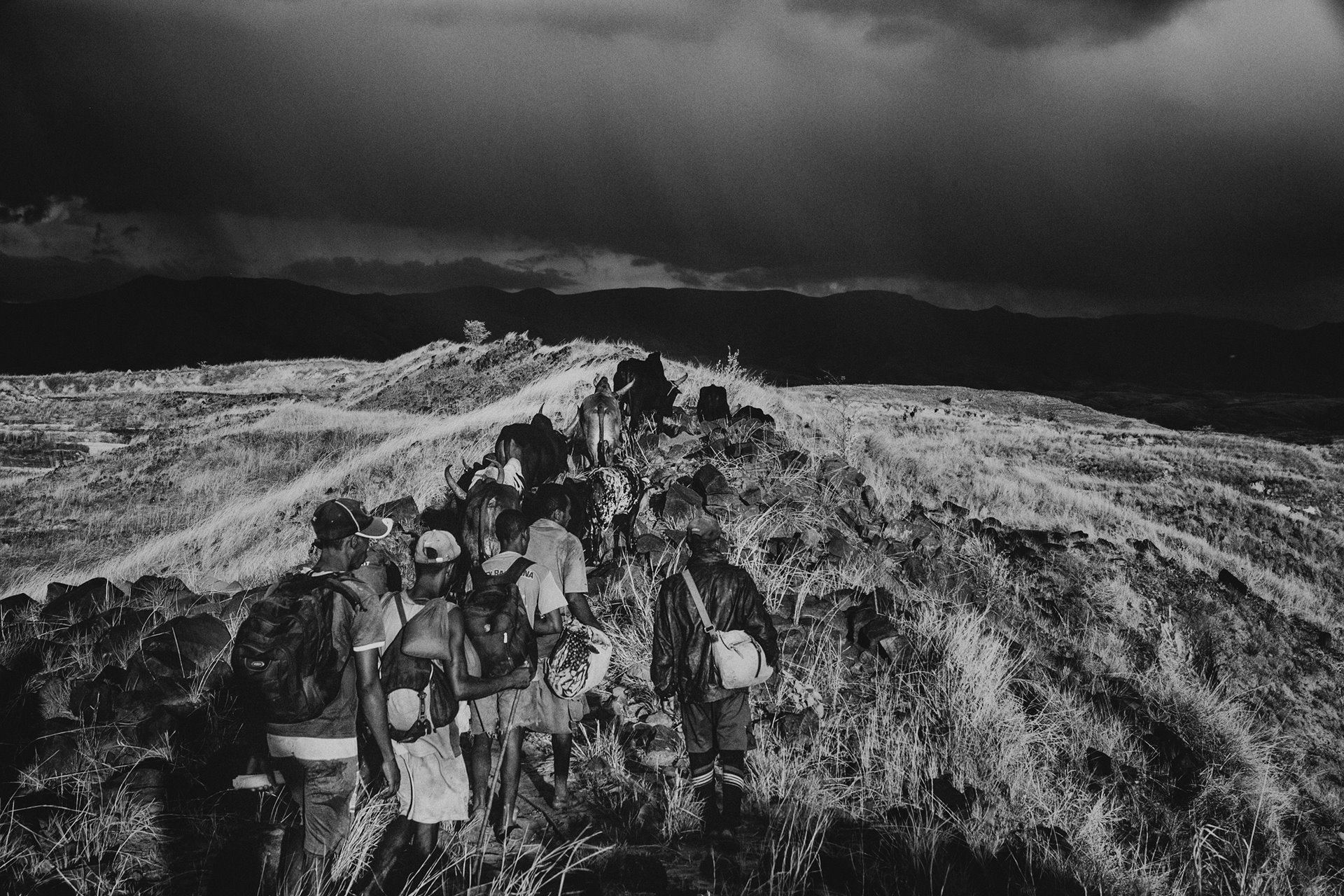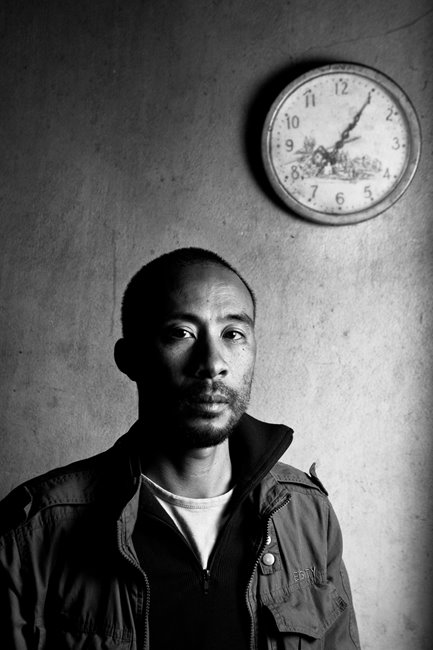Louis Kasay, a prominent zebu breeder, along with eight of his herdsmen and thirteen zebu, descend the eastern slope of the Tsingy Plateau in Bemaraha, Madagascar, on their ten-day walk to the zebu market in Tsiroanomandidy.
The rural population of southern and western Madagascar face violence and the daily theft of their much-prized humped cattle, zebu, in a complex conflict of different human interests, underscored by environmental and economic issues. Zebu (Bos taurus indicus) were brought to Madagascar from the Indian subcontinent centuries ago. In rural areas, in addition to their role in agriculture and transport, zebu are a symbol of wealth and prestige, and are at the heart of many rituals. In urban areas they are highly valued for their meat, which is served in upscale restaurants.
Groups of men called dahalo (which roughly translates as 'bandits') have stolen zebu for decades, but only a few at a time as dowry gifts for a bride’s family and to prove their virility. Since the 1970s, zebu theft has increased in scale and violence as the focus shifted from ancestral traditions to the monetary value of the cattle. This shift in focus was a result of mounting rural poverty and a food crisis – a situation exacerbated by a 2009 military coup, ongoing drought, and environmental degradation. Organized armed dahalo groups now take hundreds of cattle at a time. Communities report entire villages being burnt down, kidnappings, and murder during cattle raids.
Government intervention has been harsh. In 2012, Amnesty International reported allegations of villages being burnt indiscriminately, and accused Malagasy security forces of indiscriminate acts of violence. In addition, deadly clashes occur between communities, and some villages have employed private security firms that do not hesitate to kill cattle raiders. Villagers often see government security forces as merely reacting to raids, rather than providing them with early warning or protecting them. They also complain of officials collaborating with dahalo and of judicial corruption that allows cattle thieves to go free. The situation is made even more challenging by the existence of zones rouges (red zones) covering much of the region – remote areas, too large and lacking sufficient infrastructure to be governable.
The photographer is himself a Malagasy citizen, and perceives zebu theft as an issue of real social concern in Malagasy rural life.

